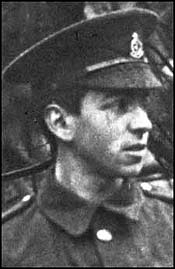
Stanley Spencer
Stanley Spencer emerged as one of the foremost artists of the English art scene during the early 20th century. His work frequently delved into the themes of religion, sex, and war.
Biography of Stanley Spencer
Stanley Spencer, the second youngest among nine siblings, was born to William and Anna Spencer in Cookham-on-Thames, a picturesque village in Berkshire that would become an integral theme in his work. His family was creative and devout, frequently engaging in musical performances and taking turns reading from the Bible daily. Spencer, along with his younger brother Gilbert (who also became a notable artist), received homeschooling from their father and sisters, allowing them to dedicate their early years to drawing and nurturing their artistic talents. The artist's sketches often depicted scenes from Cookham, and he frequently copied illustrations from his father's extensive library. As a child, he drew inspiration from the work of children's illustrator Arthur Rackham, which ignited his passion for art.
Spencer's formal artistic training commenced under the guidance of a local artist, Dorothy Bailey, who taught him and his brother Gilbert using watercolors. At the age of 15, he enrolled at the Technical Institute in Maidenhead. The following year, he moved to the Slade School of Fine Art in London, where he studied from 1908 to 1912, honing his skills as a draughtsman.
During this time, he exhibited the painting "John Donne Arriving in Heaven" (1911) and some drawings at the Second Post-Impressionist Exhibition, organized by Roger Fry. The subsequent three years marked what could be considered the most prolific phase of Spencer's artistic career, which he later referred to as his "Golden Age." During this period, his artistic vision was most intense, resulting in some of his finest work.
However, this period of creative prosperity was abruptly interrupted by the outbreak of World War I. Spencer joined the Royal Army Medical Corps, initially serving as an orderly at the Beaufort War Hospital near Bristol. In 1916, he was stationed in Macedonia, and by 1917, he had become an infantryman in the 7th Battalion of the Royal Berkshires in the Balkans. He endured over two years on the front lines but was sent home after contracting malaria. Although he did not paint during the war, upon his return to Cookham after the conflict, he produced several works reflecting his wartime experiences.
In 1927, Spencer exhibited his breakthrough masterpiece, "The Resurrection, Cookham" (1924-27), at London's Goupil Gallery, receiving significant critical acclaim. From the early 1930s onwards, his work increasingly delved into themes of sex, reflecting his own unconventional and multiple personal affairs. Critics were often dismissive of the art he created during this period, and despite being a member of the Royal Academy, the institution rejected two of his paintings, leading to his decision to resign due to feeling misunderstood.
Spencer's landscapes gained popularity among art buyers, even though he was not particularly passionate about creating them. He described these landscapes as "dead, dead" but continued to produce them due to their commercial viability. Painting en plein air made him feel lonely, and he yearned to create art that explored the complex and gritty relationships between figures and their surroundings.
Post-war, Spencer struggled to recapture the contentment of his earlier 'golden age.' His eccentricities became more pronounced, such as wearing pajamas under his suit in cold weather and subsisting mainly on jam sandwiches. He was frequently seen wandering Cookham's lanes, pushing an old pram carrying his canvas and easel. His itinerant lifestyle led him to spend much of his adult life at various friends' homes. Without the domestic security of his early years, accessing his creative visions became more challenging. He meticulously documented his paintings, creating lists and catalogs organized by themes or sequences.
During the 1940s and 1950s, Spencer's work fell out of favor with some critics, who criticized its form and technique. Nevertheless, he retained a substantial following, and in 1950, Spencer was reinstated as a member of the Royal Academy. In 1959, in recognition of his remarkable achievements and prolific career, he was knighted.
In addition to his art, Stanley Spencer was a prolific writer and frequently engaged in self-analysis through daily journaling. In December 1958, he received a cancer diagnosis and passed away a year later at the Canadian War Memorial Hospital in Cliveden, all while continuing to work up until his final days. Upon his death, several trunks filled with notebooks, diaries, letters, lists, and other writings were left behind, later acquired by the Tate.
Years:
Born in 1891
Country:
United Kingdom, Cookham
Gallery: